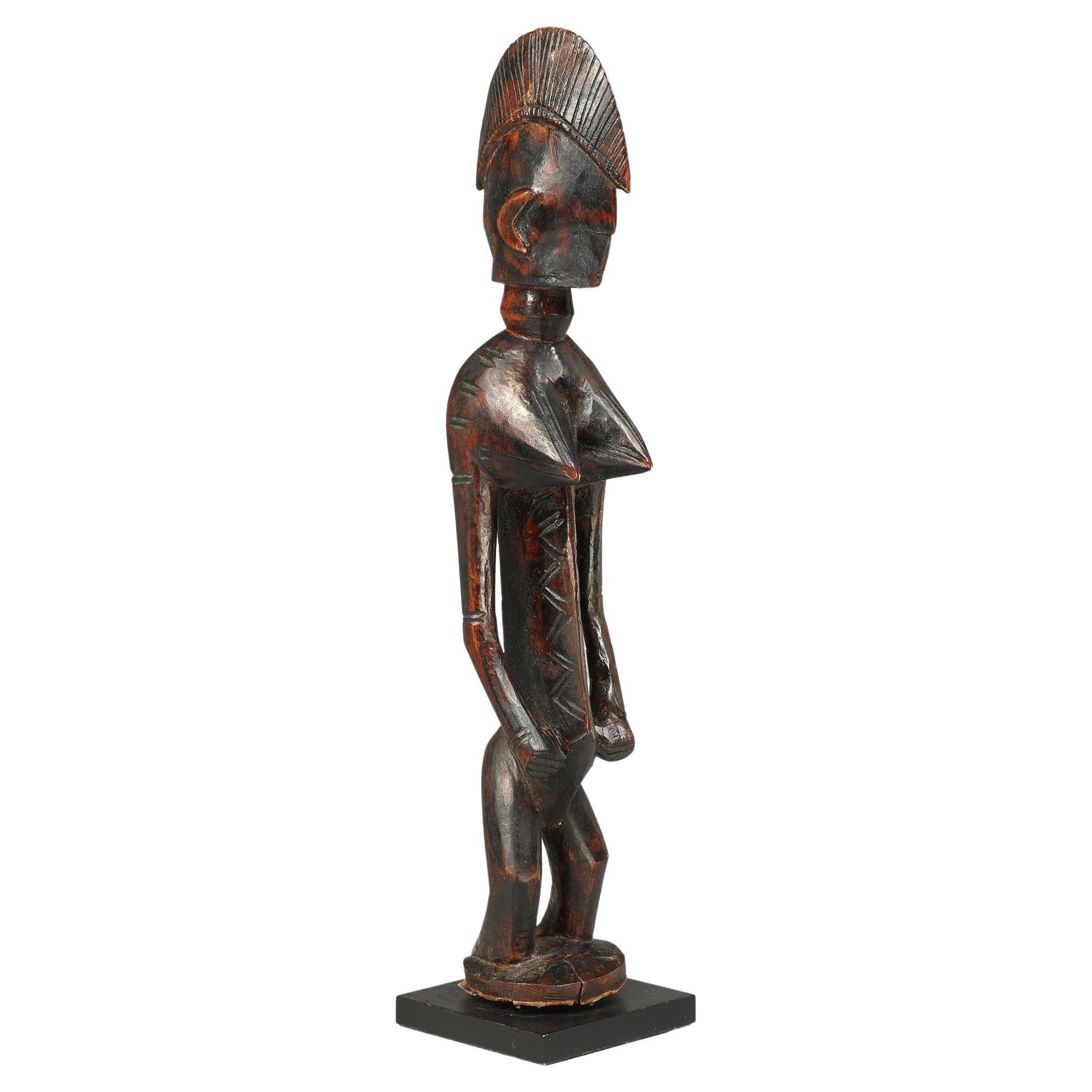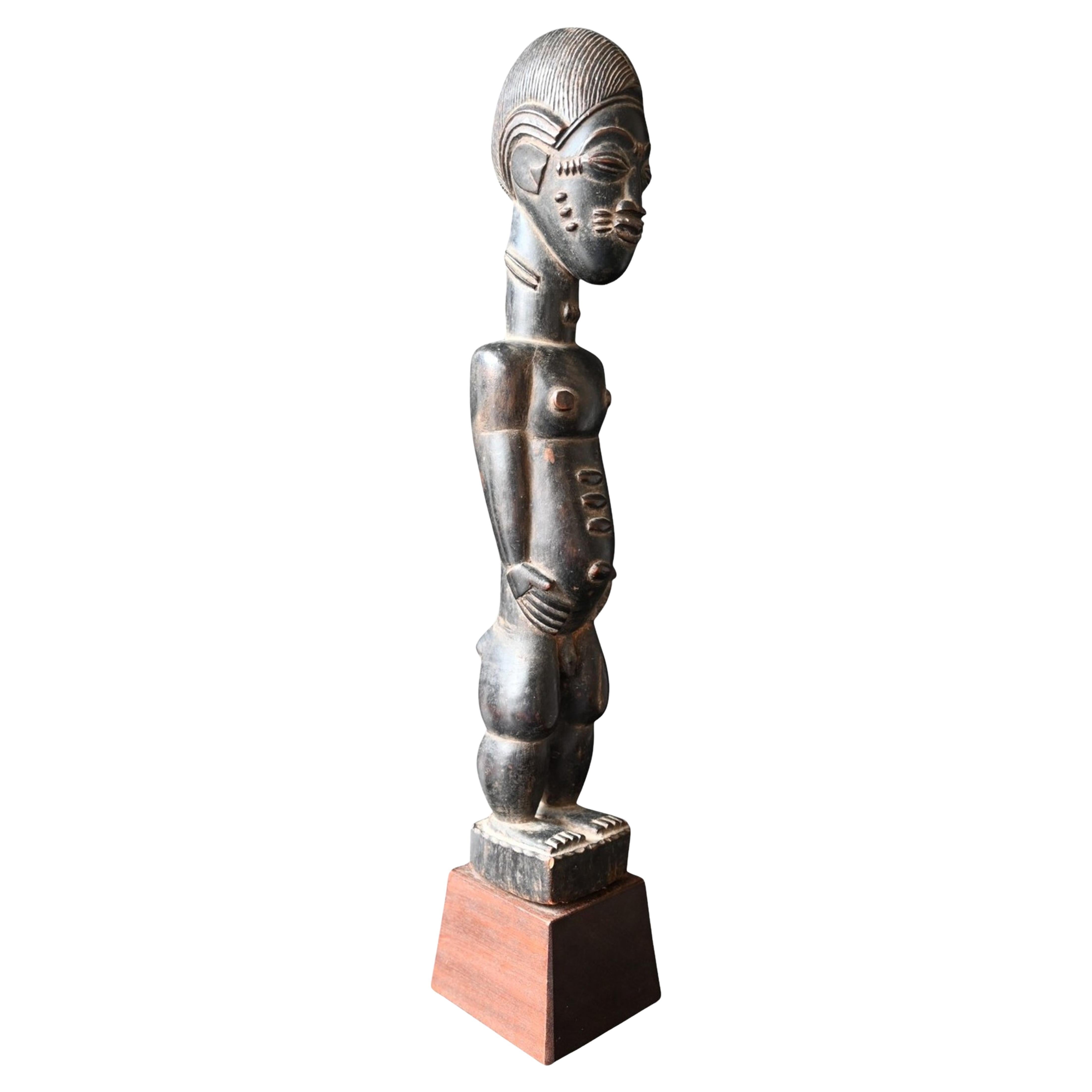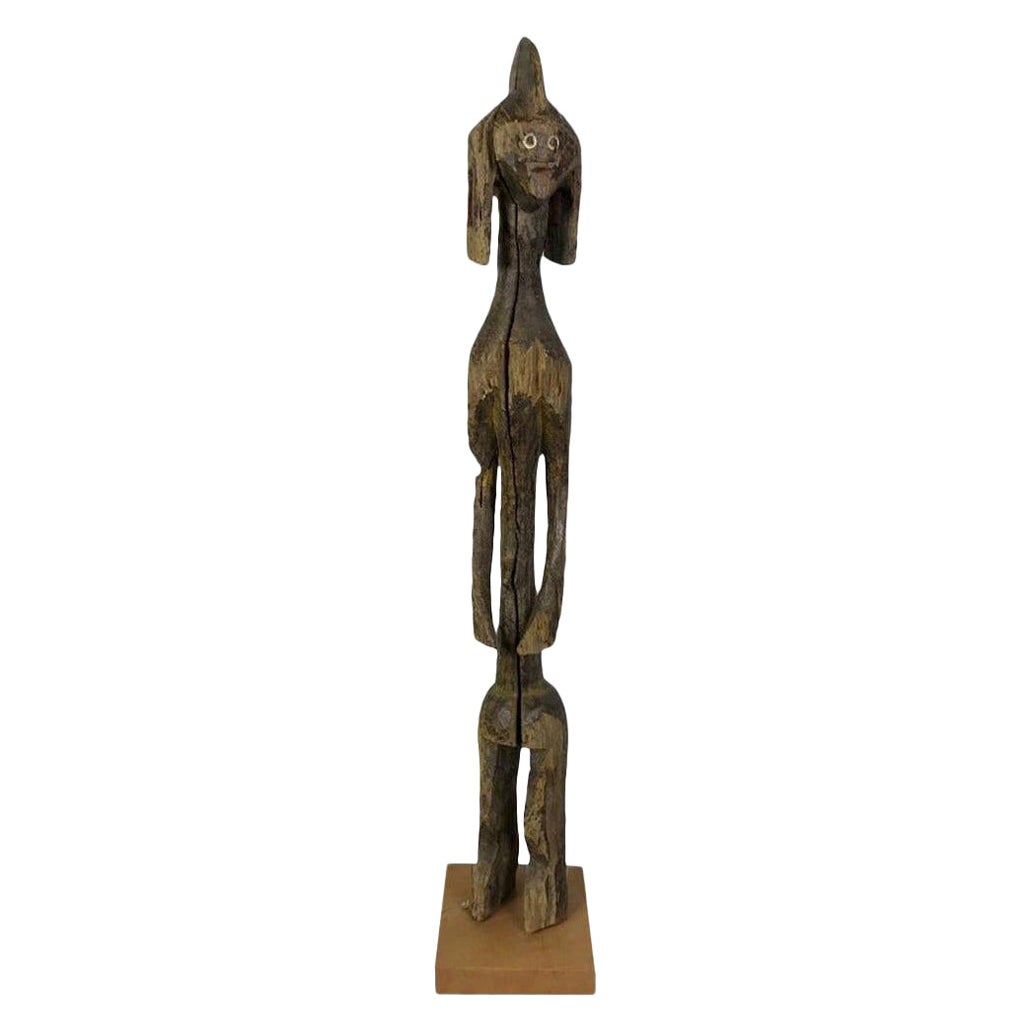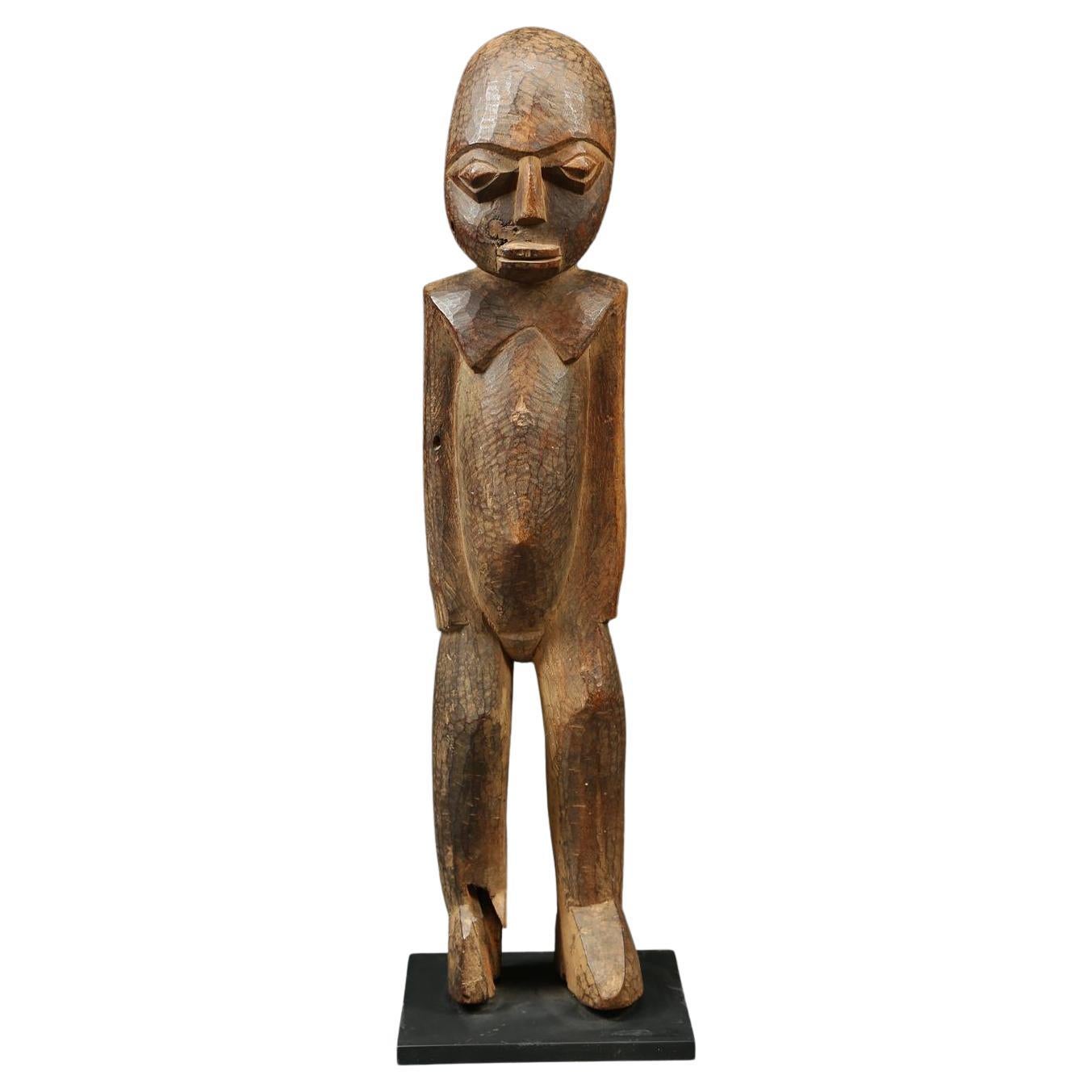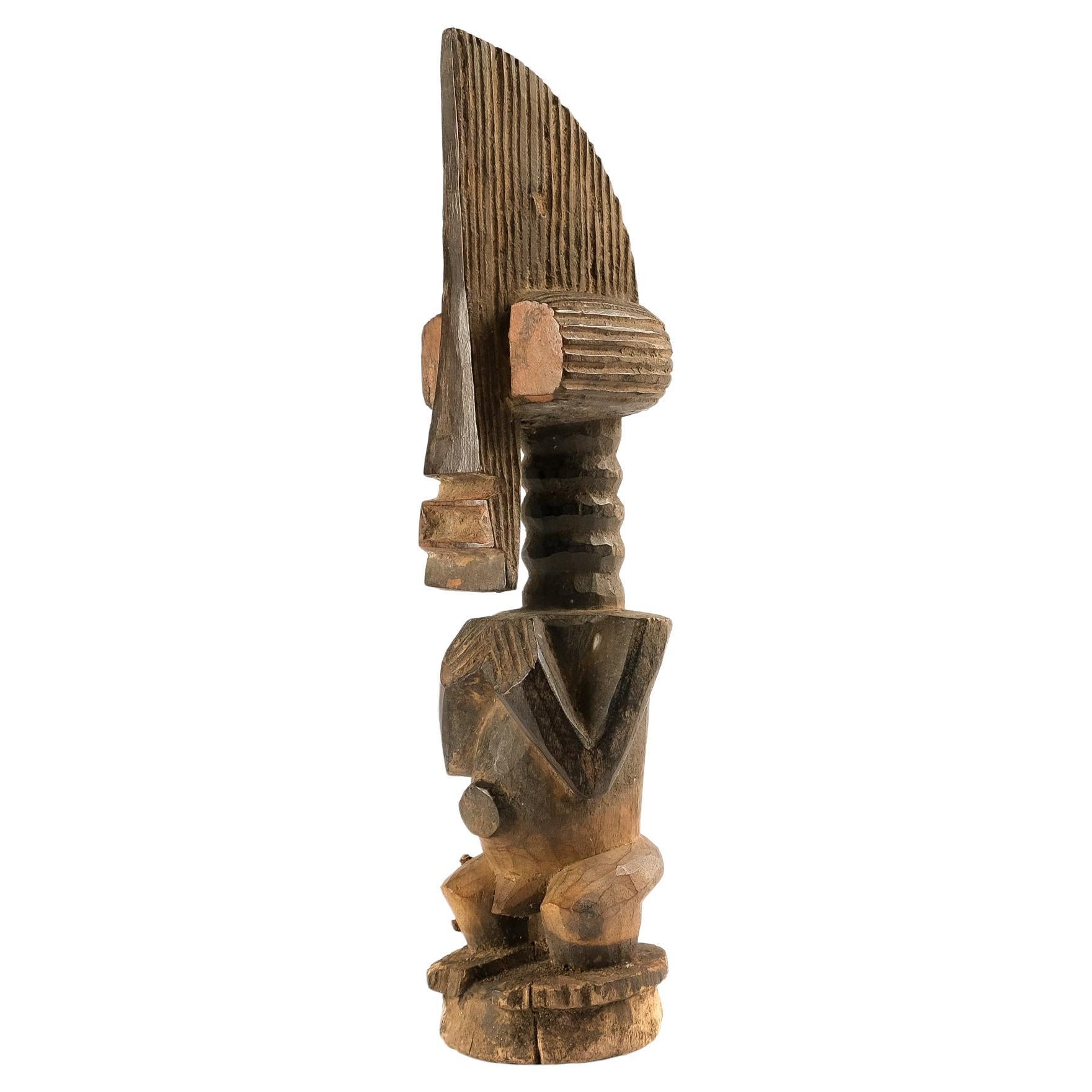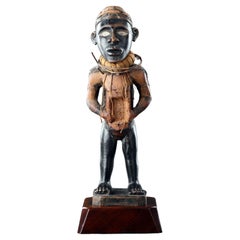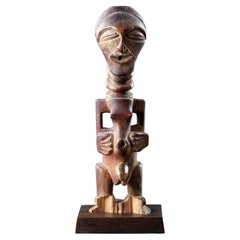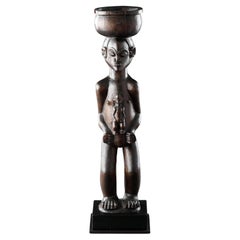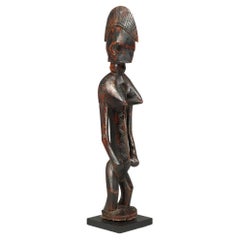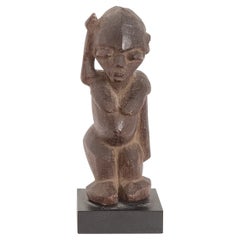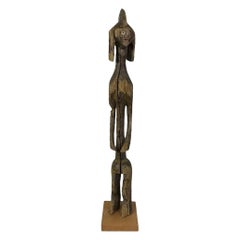Items Similar to An Early Group of Four African Figures exhibited in New York, September 1935
Want more images or videos?
Request additional images or videos from the seller
1 of 21
An Early Group of Four African Figures exhibited in New York, September 1935
$46,500per item
£35,770.90per item
€41,519.84per item
CA$65,576.10per item
A$73,456.26per item
CHF 38,581.89per item
MX$893,204.56per item
NOK 488,572.64per item
SEK 463,786.81per item
DKK 309,878.64per item
Quantity
About the Item
An Early Group of Four African Figures exhibited in New York, September 1935, the same year as Moma’s groundbreaking African Art Exhibition
Two Baule Figures, a Ewe Figure and a Yoruba Figure
Wood
Ivory Coast / Togo / Ghana / Nigeria / Benin
Late 19th Century - Early 20th Century
Size: Baule: 66.5cm high - 26¼ ins high / 72cm high - 28¼ ins (with base)
Baule: 31.5cm high - 12½ ins high / 36.5cm high - 14¼ ins high (with base)
Ewe: 18.5cm high - 7¼ ins high / 24.5cm high - 9¾ ins high (with base)
Yoruba: 18cm high - 7 ins high - 23.5cm high - 9¼ ins high (with base)
Provenance:
Ex Boris Lovet-Lorski (1894 - 1973) artist / modernist sculptor
Dawson’s Auctioneers, New Jersey USA, May 2001
Ex Private collection
Ex Private English collection
Exhibited: ‘African Negro Art’ Stendahl Gallery, New York, USA, 1935
Literature: published: ‘African Negro Art’ Stendahl Gallery, New York, September 1935 with an introduction by Merle Armitage
cf
Merle Armitage (1893 (Iowa) - March 15, 1975) was an American set designer, tour manager, theatre producer, opera producer, art collector, author, and book designer.
Philadelphia Musuem of Art holds correspondence between Earl Stendahl to Merle Armitage, 1944 - 1947.
note: 1935 was an important year in New York for African art. The groundbreaking ‘African Negro Art’, exhibition, was organised by New York’s Museum of Modern Art (Moma). One of the first exhibitions in the United States to display African sculptures as works of art. One can only presume the Stendahl Gallery wanted to coincide their own exhibition later that year, also called; ‘African Negro Art’ showcasing private collections, together with a catalogue (priced at 25c’s) between September 20th to October 10th, 1935 sponsored by Louis Danz and Merle Armitage, who authored and designed the catalogue.
Louis Danz, author and designer, worked closely with Merle Armitage throughout the 1930’s and 40’s.
Baule sculpture is one of West Africa’s most significant art traditions which influenced many 20th century artists, notably Amedeo Modigliani. To western eyes, the essence of Baule style is a balanced asymmetry that excites while also suggesting stability and calm. The faces are tilted gently to one side whilst one eye is lower than the other, the hair is finely carved in zig zag ridges, and the downcast eyes together with the careful holding of their hands against their bodies all give a feeling of peaceful introspection.
Baule figures are carved to represent two types of spirit: spirit spouses or mates in the other world or bush spirits who inhabit nature beyond the edge of human settlements. Both are similar in form and each type is referred to by the Baule as ‘waka san’, a person in the wood. Figural bush spirits are carved as intermediaries who may intervene in a person’s life to confer clairvoyance, ‘enabling them to divine through trance dances’. They are also used to localise troublesome spirits and in this instance the figures receive libations and develop an encrusted surface as have these examples. Sometimes these figures become important spirit helpers and are displayed near the diviner during a public performance.
In West Africa the Yoruba people have a rate of twin births four times that of anywhere else, and twins posed a difficult problem for the Yoruba. They violated the normal pattern of things as women normally only give birth to one child at a time and twins were subject to a higher rate of infant mortality. Twins were expensive as there were two mouths to feed with special luxurious food, and this was given to them whether alive or dead. Twins also had the capacity to deliver unexpected good or bad fortune to their parents. The mothers of twins would not deny them anything in fear of this ill fortune, and could often be seen in the local market place singing and dancing and begging for money in order to be able to placate their offspring.
The Ewe are the largest ethnic group in Togo, with smaller groups in Ghana, Benin, Ivory Coast and Nigeria. They consider the birth of twins (called ‘Venavi’ or ‘Venovi’) as a blessed omen. Both twins are treated fairly and equally, fed at the same time and wearing the same clothes until they reach puberty. In the instance of mortality of one twin, the parents would acquire a statuette to replace the deceased child. Often a ‘doctor’ (fetishist) would be consulted to activate the figure’s ‘magical’ virtues.
- Dimensions:Height: 26.25 in (66.68 cm)Width: 6 in (15.24 cm)Depth: 6 in (15.24 cm)
- Materials and Techniques:
- Place of Origin:
- Period:
- Date of Manufacture:Late 19th Century - Early 20th Century
- Condition:Wear consistent with age and use.
- Seller Location:London, GB
- Reference Number:1stDibs: LU9363243329192
About the Seller
No Reviews Yet
Recognized Seller
These prestigious sellers are industry leaders and represent the highest echelon for item quality and design.
Established in 1989
1stDibs seller since 2023
- ShippingRetrieving quote...Shipping from: London, United Kingdom
- Return Policy
Authenticity Guarantee
In the unlikely event there’s an issue with an item’s authenticity, contact us within 1 year for a full refund. DetailsMoney-Back Guarantee
If your item is not as described, is damaged in transit, or does not arrive, contact us within 7 days for a full refund. Details24-Hour Cancellation
You have a 24-hour grace period in which to reconsider your purchase, with no questions asked.Vetted Professional Sellers
Our world-class sellers must adhere to strict standards for service and quality, maintaining the integrity of our listings.Price-Match Guarantee
If you find that a seller listed the same item for a lower price elsewhere, we’ll match it.Trusted Global Delivery
Our best-in-class carrier network provides specialized shipping options worldwide, including custom delivery.More From This Seller
View AllA Carved Ebony Prestige Staff Depicting an Important Elder or Leader
Located in London, GB
A Carved Ebony Prestige Staff Depicting an Important Elder or Leader wearing a Head-Ring ‘Isicoco’
His waistband neck-ring and eyes inlaid with brass studs, his hands carved to his s...
Category
Antique Late 19th Century South African Tribal Art
Materials
Ebony
A Powerful Kongo Fetish Figure
Located in London, GB
A Powerful Kongo Fetish Figure
Wood, metal, cloth, nails, glass
Areas of dark, black lacquered patina, worn through from use
The cavity to the stomach now empty
Kongo Peoples, Dem...
Category
Early 20th Century Congolese Tribal Art
Materials
Metal
A Songye Male ‘Power’ Figure
Located in London, GB
A Songye Male ‘Power’ Figure
Open aperture to the head and stomach
Fine overall patina, loss to feet
Democratic Republic of Congo
19th Century
Size: 23cm high - 9 ins high
The ...
Category
Antique 19th Century Congolese Tribal Art
Materials
Wood
$16,500
A Large Finely Carved ‘Cup Carrier’ of a Women with Child
Located in London, GB
A Large Finely Carved ‘Cup Carrier’ of a Women with Child
Superb colour and rich patina
Wood
Tschokwe, Democratic Republic of Congo
Early 20th Century
Size: 42cm high - 16½ ins ...
Category
Early 20th Century Congolese Tribal Art
Materials
Wood
A Superbly Carved Lime Spatula Representing Two Figures
Located in London, GB
A Superbly Carved Lime Spatula Representing Two Figures
Wood (ebony)
Northern (?) Massim, New Guinea
19th Century
Size: 31cm long - 12¼ ins long
Provenance:
Ex Anthony Meyer G...
Category
Antique 19th Century Papua New Guinean Tribal Art
Materials
Ebony
A Powerful Baule Mask
Located in London, GB
A Powerful Baule Mask
With rich dark ‘lacquered black’ patina, excellent colour with areas of ‘kaolin’
Wood
Ivory Coast
Early 20th Century
Size: 32.5cm high - 12¾ ins high
Prov...
Category
Early 20th Century Ivorian Tribal Art
Materials
Wood
$40,500
You May Also Like
Early Standing Bambara or Malinke Female Figure Deep Patina, Mali West Africa
Located in Point Richmond, CA
Early Bambara or Malinke standing female figure with arms at sides, heavy wear and polish from handling and use. Possibly cut from the top of prestige staff. Fine refined abstract ...
Category
Mid-20th Century Malian Tribal Tribal Art
Materials
Wood
$2,360 Sale Price
32% Off
Sculpture, Lobi Male Figure, Burkina Faso, Mid/Late-1900s
Located in Stockholm, SE
Sculpture, Lobi Male Figure with one hand pointing upwards, Burkina Faso. Mid/late-1900s.
Height excl. base 13 cm. Total height 15 cm. Patina, signs of age.
Provenance: Dealer and...
Category
Mid-20th Century Burkinabe Tribal Tribal Art
Materials
Wood
Baule “Blolo Bian” Statue – Côte d’Ivoire, Early 20th Century
By Baule Tribe
Located in Bilzen, BE
Baule “Blolo Bian” Statue – Côte d’Ivoire, Early 20th Century
Height: 39 cm Material: Wood with dark, aged patina Provenance: Piasa, Paris, June 20, 2008
This elegant male figure,...
Category
Early 20th Century Ivorian Tribal Tribal Art
Materials
Wood
African Mumuye Carved Wood Iagalagana Tutelary Figure on Display Stand
Located in Studio City, CA
A carved wood Iagalagana figure by the Mumuye Peoples of Nigeria. These figures served as guardians and were often made to ensure the personal protection of their individual owners a...
Category
Early 20th Century Nigerian Figurative Sculptures
Materials
Wood
Strong Cubist Lobi Standing Figure Ghana Burkina Faso Africa Early 20th Century
Located in Point Richmond, CA
Finely carved large geometric figure from the Lobi, of Ghana and Burkina Faso, dating from the early to mid-20th century. It has a large head with projecting eyes, nose and mouth cre...
Category
Mid-20th Century Ghanaian Tribal Tribal Art
Materials
Wood
$1,350 Sale Price
25% Off
20th Century African Songye Nkishi Kifwebe Figure, Democratic Republic of Congo
Located in London, GB
For sale is this wonderful vintage African hand-carved Kifwebe association Figure (or "N'kishi"), originating from the Songye people of the Democratic Republic of Congo (formerly the...
Category
Late 20th Century Congolese Tribal Tribal Art
Materials
Metal
More Ways To Browse
Antique Furniture In New York
1930s Furniture New York
Used Furniture In Philadelphia
African American Antique
New Jersey Antique Furniture
African American 19th Century
Ethnic Sculpture
New Jersey 19th Century
Tribal African Art Sculpture
African Antiques
Antique American Folk Art Sculpture
Tribal Art Antiques
Togo Brown
African Birthing
African Baule
Togo Set
African Art Sculptures Ghana
Benin Carved
